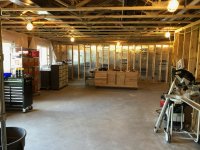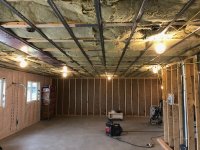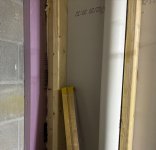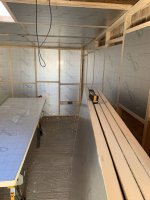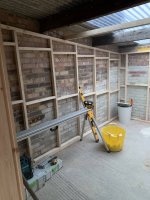Mini Me
Member
I am renovating my wife's sewing room (7.0 x 9.0 x 2.5 metres) and I want to ask a question about insulation and you guys would be far more expert than anyone I know in Oz. It is a basement situation with only one wall open to light and the floor above is my workshop which has zero insulation between the top and the lower basement and I intend to put a suspended ceiling in the basement because I can then run and access all services through the ceiling. I am also considering putting batts in attached to the under surface of the top floor.
We live in a temperate climate, lows in the 40's (F) and highs in the 110 to 120 range, the highs are not the problem only the lows. The building walls are concrete block cement filled and what I propose to do is build internal timber walls with Gyprock (drywall) and stand them up with a 200mm air space between the framed wall and the concrete block walls. The room temperature in the winter stays very low maybe in the fifties and I am wondering if I insulate the timber internal wall will it have enough effect to be worthwhile. The area is heated by heat pump reverse cycle AC but as things stand it does not do enough due to the heat going straight through the pine panelling now directly attached to the concrete walls. Any advice you might offer would be very much appreciated.
The insulating batts we get top out around R5 so nothing like you would get, would a R5 single layer do enough to be worthwhile? I think I know what the ultimate answer and that is to install under floor heating but the budget does not stretch that far and very few people in our region do it and I have found the suppliers are not interested in a job this small even if I had the budget.
We live in a temperate climate, lows in the 40's (F) and highs in the 110 to 120 range, the highs are not the problem only the lows. The building walls are concrete block cement filled and what I propose to do is build internal timber walls with Gyprock (drywall) and stand them up with a 200mm air space between the framed wall and the concrete block walls. The room temperature in the winter stays very low maybe in the fifties and I am wondering if I insulate the timber internal wall will it have enough effect to be worthwhile. The area is heated by heat pump reverse cycle AC but as things stand it does not do enough due to the heat going straight through the pine panelling now directly attached to the concrete walls. Any advice you might offer would be very much appreciated.
The insulating batts we get top out around R5 so nothing like you would get, would a R5 single layer do enough to be worthwhile? I think I know what the ultimate answer and that is to install under floor heating but the budget does not stretch that far and very few people in our region do it and I have found the suppliers are not interested in a job this small even if I had the budget.



